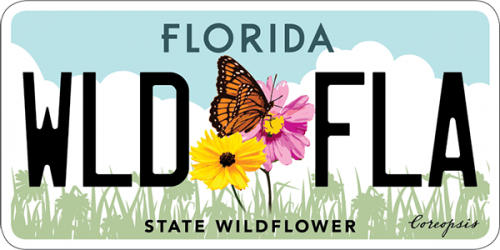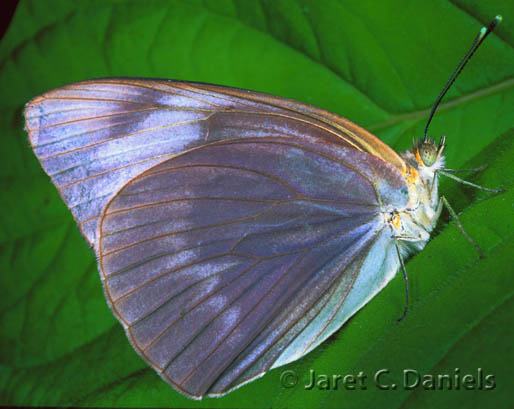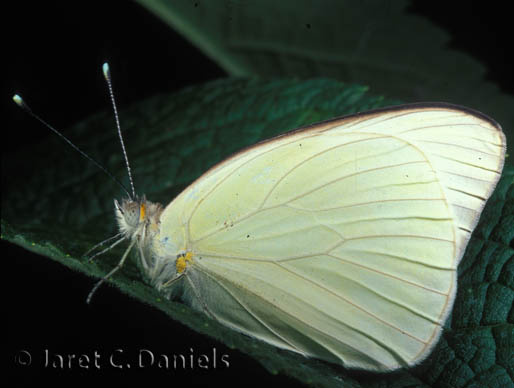- Family name: Pieridae/Whites and Sulphurs
- General description: Male white with black forewing apex. Female dirty white to gray with black forewing apex and black forewing cell spot. Ventral hindwing white-yellow in males to gray in females.
- Field Marks: General: Turquoise antennal clubs Male: white with black forewing apex Female: white to gray with black forewing apex an black cell spot
- Sexes: appear different
- Wingspan: 45-58 mm
- Life Cycle: Egg: yellow, spindle-shaped, laid singly or in small clusters on host leaves Mature larva: yellow with gray longitudinal stripes and covered in small black spots Chrysalis: white with black arkings
- Number of Generations: multiple
- Flight Season: All year
- Abundance: Common
- Habitat: salt marshes, beaches, roadsides, disturbed sites
- Larval Host Plants: Virginia pepper grass (Lepidium virginicum), saltwort (Batis maritima), limber caper (Capparis flexuosa), sea rocket (Cakile lanceolata)
- Similar Species: Checkered White
- Additional Information: Primarily encountered in coastal habitats.
- Range in Florida
 The Florida Wildflowers & Butterflies projects at the Florida Museum are sponsored in part by the State of Florida and the Florida Wildflower Foundation, Inc.
The Florida Wildflowers & Butterflies projects at the Florida Museum are sponsored in part by the State of Florida and the Florida Wildflower Foundation, Inc.

